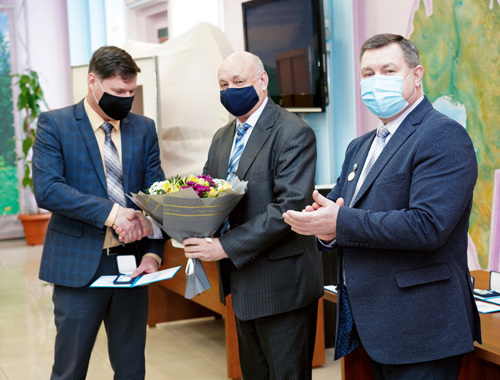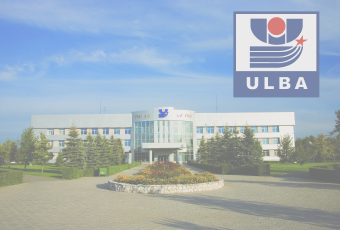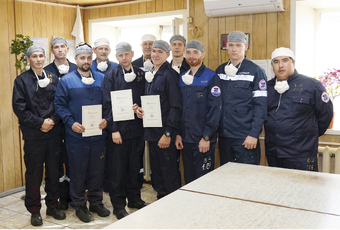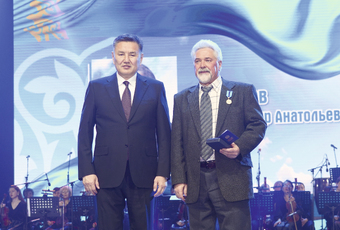In the name of peace
In the name of peace
We continue our story about the projects awarded the V.P. Potanin at the end of 2020. This article is about one of the plant's largest campaigns, the conversion of highly enriched uranium (HEU).
Instead of a preface
Today the world has accumulated a significant amount of nuclear hazardous materials that can be used for the manufacture of explosive devices. In order to minimize the risk of their unauthorized use, recycling programs are in place. In case of highly enriched uranium, the most promising conversion method is to reduce its enrichment.
In 1993, a memorandum was signed between Russia and the United States to convert highly enriched uranium to low enriched uranium. According to the document, a program has been launched for the stage-by-stage conversion of HEU, including that located in the territory of the Republic of Kazakhstan.
19 years of experience
Since 2002, UMP has also become a participant in the program to prevent the proliferation of nuclear materials. To date, within its framework, the plant has carried out four campaigns for the conversion of Uranium unirradiated materials:
– in 2005 – conversion of BN-350 reactor fuel to low-enriched uranium (LEU);
– in 2011 and 2015 – conversion of WWR-K reactor fuel;
– in 2019-2020 – conversion and down-blending of IGR HEU nuclear fuel.
Task from Aktau
The first page in the book on the history of HEU conversion at UMP was the program to deplete the fuel of the BN-350 reactor – HEU dioxide pellets. BN-350 is a fast neutron power reactor, which was put into operation in 1973 in Aktau. After the shutdown in 1999, it became necessary to convert unclaimed fuel residues. This task was successfully implemented at the plant in 2005.
The BN-350 fuel pellets were converted using a technology based on high-temperature oxidation and nitric acid dissolution. The extracted pellets were oxidized to uranium oxide powder. Then there was carried out the correction of the enrichment by the dry method. The resulting nitrous oxide with an enrichment of less than 5% U-235 was dissolved in a nitric acid solution. After that, an additional adjustment was carried out and the resulting material was sent for the production of pellets within the framework of the standard UMP technology.
98 percent result
The next campaign was the WWR-K reactor fuel conversion project. WWR-K is the only multipurpose research reactor in Kazakhstan. Its launch dates back to 1967. After the accident at the Chernobyl nuclear power plant, the operation of the reactor was suspended. From 1998 to 2015, work was underway to convert the reactor from highly enriched fuel to low enriched fuel. At the same time, fuel with an enrichment of 36%, which is a fuel assembly consisting of an aluminum matrix with uranium dioxide dispersed in them, was subject to conversion.
Separation of uranium and aluminum was carried out by dissolution in sodium hydroxide. During this procedure, the aluminum was completely brought into solution. The uranium remaining in the solid state was separated by filtration. After nitric acid dissolution and correction of enrichment, it was converted to obtain oxides.
Within the framework of the project, the plant workers manufactured non-standard technological equipment, such as a fuel element cutting unit (TVEL) and a dissolution reactor. The correct choice of technical directions, a flexible approach in making technological decisions and a high organization of labor made it possible to solve the difficult problem of converting HEU from aluminum fuel rods into low-enriched uranium. At the same time, the extraction of uranium in 2011 and 2015 amounted to more than 98%.
What does it cost us to build a site?!
The last HEU conversion campaign was completed in August 2020. Within the framework of the project, a conversion section for IGR HEU was created at the plant. The IGR itself is located in Kurchatov; it is a one-of-a-kind research reactor and has no analogues in the world. IGR fuel is represented by graphite blocks impregnated with 90% nuclear material.
The technological process of converting IGR HEU included the preparation of fuel for dissolution (crushing into fragments, grinding, thermal oxidation), dilution of HEU, dissolution of uranium-containing material in nitric acid, precipitation and calcination of ammonium polyuranate to uranium oxides. For these processes, the selection of equipment was carried out taking into account the possibility of working in aggressive environments and the requirements of nuclear safety. The purchased mechanisms are equipped with the technological areas of grinding, oxidation and thermal decomposition. Existing equipment was also used to reduce costs.
Worldwide recognition
The HEU conversion site created at the plant is multifunctional, equipped with the most modern nuclear safe equipment and can be used to process new materials of a fairly wide range. The importance of this project is extremely high, since it is due to the need to solve the global task of eliminating the threat of proliferation of highly hazardous nuclear material.
The works carried out by UMP are highly appreciated at the international level. One of the confirmation of this is a letter sent to the Chairman of the Board of the plant by the US Department of Energy. The document expresses deep satisfaction with the efforts of UMP JSC and the Republic of Kazakhstan to eliminate the risk of potential proliferation of nuclear materials.
Along with strengthening the positive image of UMP and the Republic of Kazakhstan, the project also has a high economic feasibility.
For the work «Organization of a highly enriched uranium conversion site», the title of «Laureate of the V.P. Potanin» were deserved by Konstantin Kuzmin (pictured), Alexey Boltanov, Mikhail Kozionov, Galina Gusakova and Igor Levanevsky.
Alexey Proskuryakov











